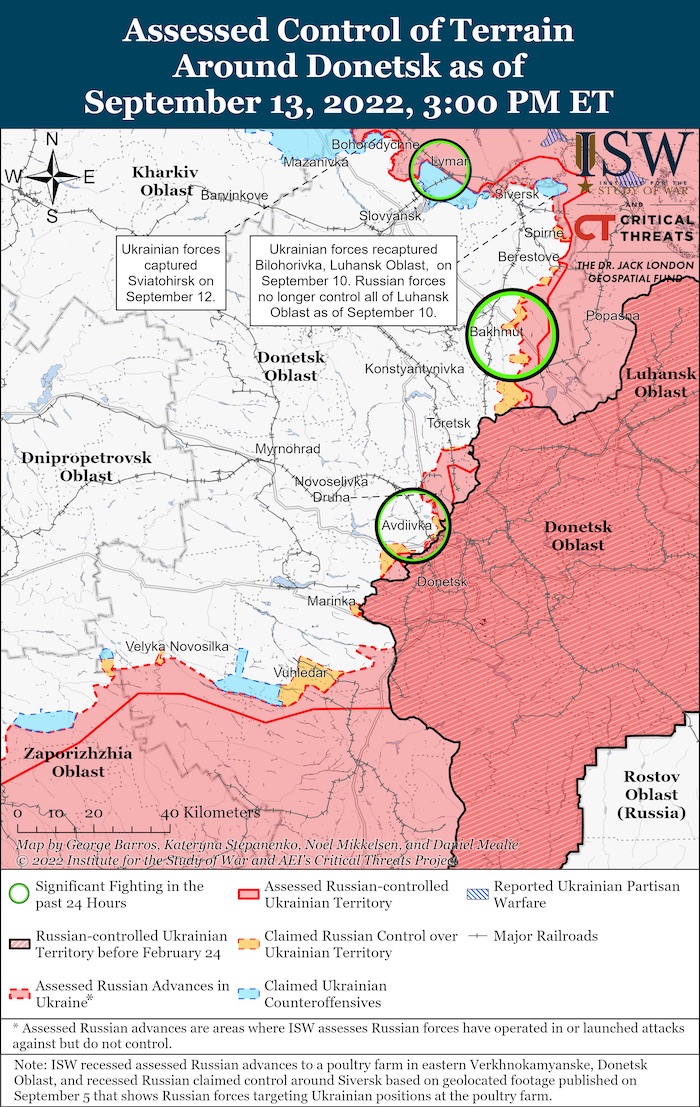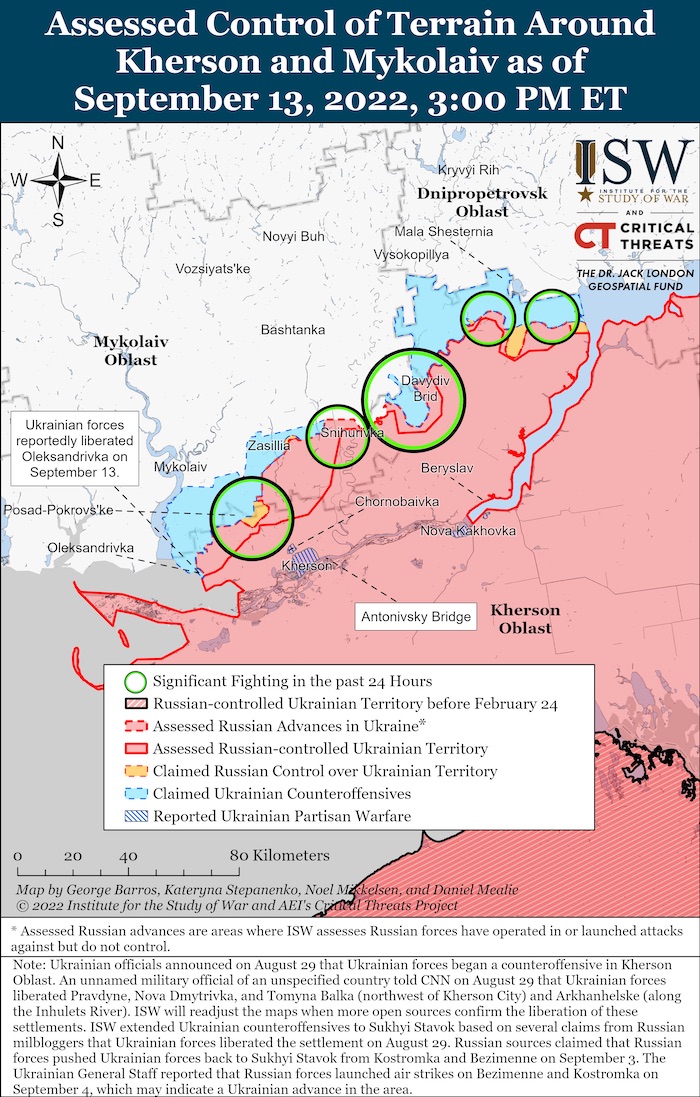As the Ukrainian army liberates 8,000 square kilometers from the Russian invaders, Euromaidan Press speaks to Oleksandr Kovalenko, a military-political analyst at Information Resistance, a non-governmental Ukrainian project, about the present and future developments at the fronts.


The Kharkiv counter-offensive fully justified the hopes of many. It is important to understand that it was preceded by a long and thorough preparation: strikes at the Russian invaders' ammunition depots and command posts, and the formation of shock assault groups, fully equipped and provided with everything necessary for a long march in the offensive.
In the coming days, the Ukrainian army will completely liberate the Kharkiv Oblast and will be able to enter the Luhansk Oblast. However, in the Luhansk Oblast, the advancement of the Armed Forces of Ukraine will slow down and may be put on hold. This is due to the fact that in the Luhansk Oblast, the Russian occupiers have better-equipped defense lines, especially where they have occupied territories since 2014, which means more work for artillery.
https://twitter.com/War_Mapper/status/1569842060114464773 What do you think about the advance in the Donetsk direction? Do you think Ukraine can claim back the territories?
In the Donetsk direction, the offensive is already developing but not as fast as in Kharkiv. This is due to the conditions that have been formed in the region over the years, during the occupation that started in 2014.
But to be honest, the Donetsk direction is not a priority right now, so the concentration of forces there will be solely to deter the offensive of the occupying units. The Armed Forces of Ukraine will focus on other areas of greater strategic importance. For example, the south.
Speaking of south, what about the Kherson counteroffensive? Does Ukraine have enough resources for a successful campaign there?
The Kherson direction may not seem as successful as the Kharkiv one, but it is not [true.] The advance of the Ukrainian army in the Kherson Oblast is complicated by the specifics of the landscape in this region. These are large open spaces, and fields. Endless fields where any advance is visible for many kilometers and can be suppressed by enemy artillery.
Therefore, the Ukrainian army takes action with extreme care in the Kherson Oblast in order to save the personnel as much as possible. On the other hand, the Russians in this area do not have a full-fledged supply of ammunition, fuel, equipment, and other means. This affects their ability to conduct defense and they will not be able to keep it for a long time. What actions do you anticipate from the Russian Federation? Do Russians have any way or chance to rebuild the momentum?No. The Russians do not have the ability to advance and capture large territories. Their offensive resources are depleted.
On the other hand, these resources are sufficient to hold territories. Therefore, in the coming months, we will see the Russian army not so much on the offensive as on the defensive.
Ukraine’s counteroffensive near Kharkiv: what enabled the Balakliia blitzkriegThere is a lot of talk about reclaiming Crimea in 2023. Do you think it is realistic?
I don’t know about the full-fledged return of Crimea in 2023, but the operation will begin in 2023, I’m sure of it. By that moment the Ukrainian army will return the Zaporizhzhia and Kherson oblasts, and these territories are the key to Crimea. Without them, it is impossible to effectively influence the invaders on the [Crimea] peninsula.
I see the further development of the situation in the war zone as follows: after the liberation of the Kharkiv Oblast, the Ukrainian Army will be able to partially liberate the Luhansk Oblast. Advance is possible until the Ukrainian Army runs into the defense lines of the Luhansk Oblast. It takes time, methodical artillery work, and patience to break through these lines of defense.
At this time, attention can be focused on other areas. For example, in Zaporizhzhia and Kherson Oblasts. The liberation of the Zaporizhzhia Oblast will open the way for us to the left bank of the Kherson Oblast and to Crimea. In fact, the battle for Donetsk and Luhansk, as well as Crimea, will be the final chord in the liberation of Ukraine from the Russian invaders.



